#Jerusalem 2021
Text
‘Jerusalem’ series review: The old city gets an uninteresting rendition in this police drama
‘Jerusalem’ series review: The old city gets an uninteresting rendition in this police drama
The show papers over the complexities of Jerusalem and leads its plot to cliched and sensationalist endings
The show papers over the complexities of Jerusalem and leads its plot to cliched and sensationalist endings
Situating itself in the titular old city of Jerusalem, the show chases stories of unrest across the narrow alleys of the contested hotbed. It, however, fails to catch a shot at…
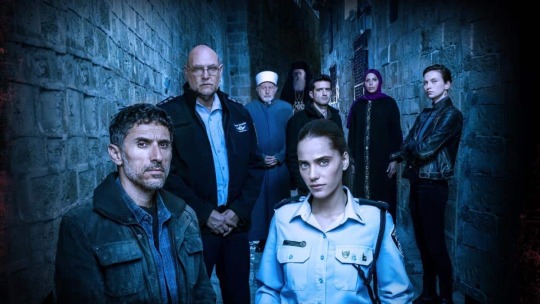
View On WordPress
#Jerusalem#Jerusalem 2021#jerusalem 2022#jerusalem 2022 review#Jerusalem Ilan Aboody#Jerusalem Lionsgate#Jerusalem Lionsgate Play#Jerusalem series#Jerusalem series review
0 notes
Text
Armenians have lived in Jerusalem for 1,600 years and Armenian Palestinians are the oldest group in the Armenian diaspora. From their indigenous land in Artsakh to the Armenian Quarter in Jerusalem, Armenians have been facing ethnic cleansing and persecution on multiple fronts. With the escalating genocidal violence in Gaza and the West Bank, armed settler encroachment into Armenian holdings in Jerusalem has fallen under the radar of some pro-Palestine activism and it is critical we do not allow this to happen.
Some context:
( In 1948, Armenians in Jerusalem numbered about 16,000. Today, that number has shrunk; estimates range from 700-1000, with a smaller community in Bethlehem. )
“We are not the objectives of the Israelis, but we occupy a huge chunk of Jerusalem. The fact that we’re here is an obstacle for them, but we’ve been here for 1,600 years and we’re not going anywhere.”
"These are only the most visible of the challenges facing the community....Israeli discrimination, economic decline, and political insecurity have taken a toll on Armenians, encouraging emigration.
A century after the community was nearly annihilated, Armenian Palestinians today say they feel deeply at home in the Holy Land, but fear how much longer they will be able to hold on."
“Don’t ask me about the massacres that happened 100 years ago [1915],” Annie Guluzian said when asked about her experiences as an Armenian Palestinian. “I won’t open [up about] those topics. Because if I do, I will start talking about my brother who was martyred by the Israelis in the [second] Intifada.”
The toll of the Israeli occupation in Palestine is what defines her life today, Guluzian added. Source
Since October 26th, 2023, when the leader of the Armenian Patriarchate of Jerusalem announced it would cancel a once-secret 2021 land lease deal with a real estate company that has alleged links to settler interests, the company, Xana Gardens, has sent in armed settlers and bulldozers to steal the land (including Armenian Chruch property and several Armenian families). Armenians have been resisting the occupational forces day in and day out.
From November 5th:
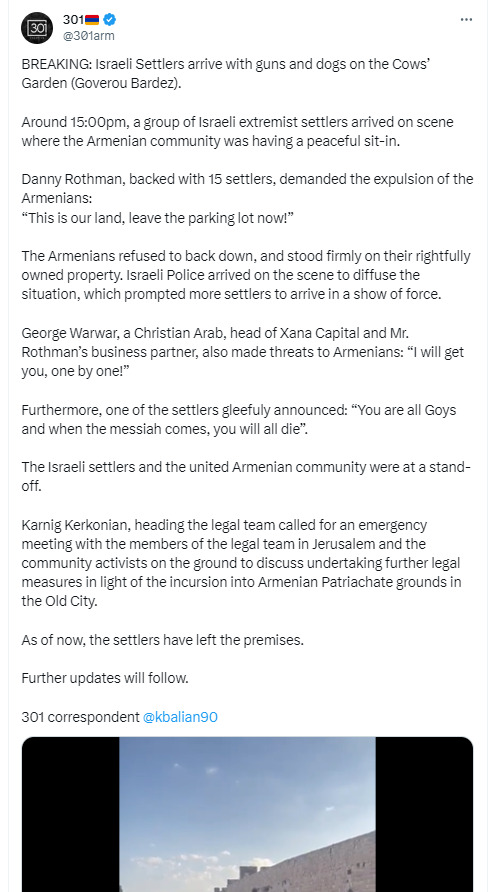
Link to tweet and video
November 5th:

Link to tweet and video
November 22nd:

Link to tweet and thread
November 25th:

Link to tweet and thread
In response, Armenians have created an account on Twitter called SaveTheArq which has been documenting and updating on social media the recent land demolitions by Israeli settlers in the Armenian quarter, they have also launched a fundraiser for legal actions to protect the Armenian quarter and I highly recommend donating, if you can't, please share it around:
#palestine#jerusalem#armenia#armenian diaspora#save the Armenian quarter#free palestine#my liberation as a Palestinian is not complete without the liberation of Armenians and I stand by that#Armenian palestinians#armenian genocide
7K notes
·
View notes
Text
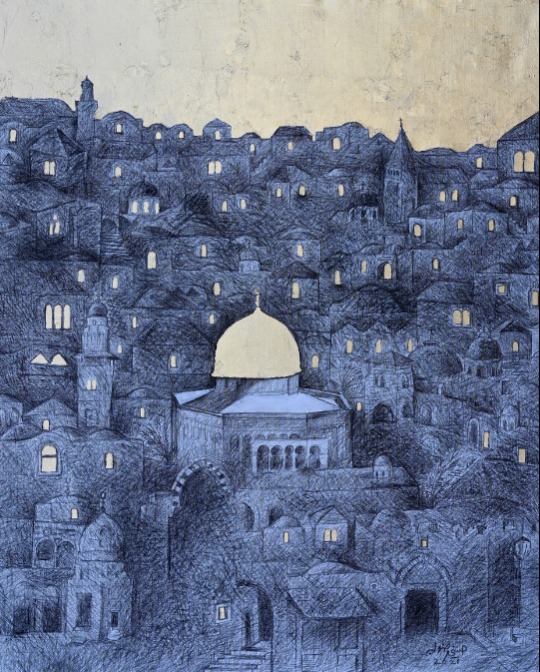
Jerusalem at night - Hosni Radwan , 2021.
Palestinian, b. 1955 -
Charcoal and gold leaf on canvas , 50 4/5 × 40 1/5 in. 129 × 102 cm.
3K notes
·
View notes
Text
it is frightening and disturbing to hear Yoav Gallant call Palestinians "human animals" but I want those who are just tuning in to be aware that this dehumanizing rhetoric isn't new. The occupation has been calling Palestinians animals since the very beginning. Moshe Dayan, who orchestrated numerous massacres in his role as defense minister during the 1967 war, called Palestinians "jackals." Yitzhak Shamir, two-term prime minister and perpetrator of the 1946 King David Hotel bombing and 1948 Deir Yassin massacre, said Palestinians are like "grasshoppers; you need to stomp on them every once in a while." Prime minister Ehud Barak, decorated with military awards from both the IOF and the US, said in 2000 that Palestinians are like "crocodiles, the more you give them meat, they want more." General Rafael Etain, after instituting a policy of mass arrests without cause which is still practiced, bragged in 1983 that "all the Arabs will be able to do is scuttle around like drugged cockroaches in a bottle." Deputy defense minister Eli Ben-Dahan said in 2013, "to me, they are like animals, they aren’t human." for decades the IOF has described their regularly scheduled massacres as "mowing the grass"; in 2021 national security strategist David M. Weinberg wrote in the Jerusalem Post, "Just like mowing your front lawn, this is constant, hard work. If you fail to do so, weeds grow wild and snakes begin to slither around in the brush." In 2014, legislator Ayelet Shaket proposed that the mothers of murdered Palestinian men should be killed along with their sons: "They should go, as should the physical homes in which they raised the snakes. Otherwise, more little snakes will be raised there. They have to die and their houses should be demolished so that they cannot bear any more terrorists." In 2002, IOF chief of staff Moshe Ya'alon compared Palestinians to a "cancer" to be eradicated. In 2000, Ovadia Yosef, Chief Sephardic Rabbi of Israel, said "how can you make peace with a snake?" These are all statements made publicly by public officials, not behind closed doors. Characterizing a population as vermin is textbook strategy for justifying genocide, and what the occupation does to Palestinians is even more dehumanizing than what they say
3K notes
·
View notes
Text
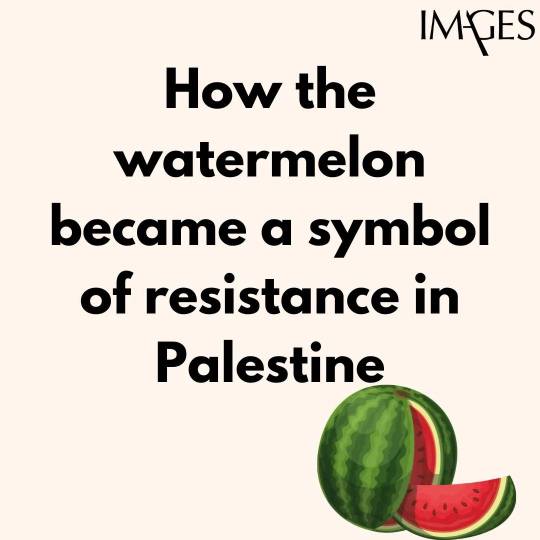


How the Watermelon Became a Symbol of Palestinian Solidarity
The use of the watermelon as a Palestinian symbol is not new. It first emerged after the Six-day War in 1967, when Israel seized control of the West Bank and Gaza, and annexed East Jerusalem. At the time, the Israeli government made public displays of the Palestinian flag a criminal offense in Gaza and the West Bank.
To circumvent the ban, Palestinians began using the watermelon because, when cut open, the fruit bears the national colors of the Palestinian flag—red, black, white, and green.
The Israeli government didn't just crack down on the flag. Artist Sliman Mansour told The National in 2021 that Israeli officials in 1980 shut down an exhibition at 79 Gallery in Ramallah featuring his work and others, including Nabil Anani and Issam Badrl. “They told us that painting the Palestinian flag was forbidden, but also the colors were forbidden. So Issam said, ‘What if I were to make a flower of red, green, black and white?’, to which the officer replied angrily, ‘It will be confiscated. Even if you paint a watermelon, it will be confiscated,’” Mansour told the outlet.
Israel lifted the ban on the Palestinian flag in 1993, as part of the Oslo Accords, which entailed mutual recognition by Israel and the Palestinian Liberation Organization and were the first formal agreements to try to resolve the decades-long Israeli-Palestinian conflict. The flag was accepted as representing the Palestinian Authority, which would administer Gaza and the West Bank.
In the wake of the accords, the New York Times nodded to the role of watermelon as a stand-in symbol during the flag ban. “In the Gaza Strip, where young men were once arrested for carrying sliced watermelons—thus displaying the red, black and green Palestinian colors—soldiers stand by, blasé, as processions march by waving the once-banned flag,” wrote Times journalist John Kifner.
In 2007, just after the Second Intifada, artist Khaled Hourani created The Story of the Watermelon for a book entitled Subjective Atlas of Palestine. In 2013, he isolated one print and named it The Colours of the Palestinian Flag, which has since been seen by people across the globe.
The use of the watermelon as a symbol resurged in 2021, following an Israeli court ruling that Palestinian families based in the Sheikh Jarrah neighborhood in East Jerusalem would be evicted from their homes to make way for settlers.
The watermelon symbol today:
In January, Israel’s National Security Minister Itamar Ben-Gvir gave police the power to confiscate Palestinian flags. This was later followed by a June vote on a bill to ban people from displaying the flag at state-funded institutions, including universities. (The bill passed preliminary approval but the government later collapsed.)
In June, Zazim, an Arab-Israeli community organization, launched a campaign to protest against the ensuing arrests and confiscation of flags. Images of watermelons were plastered on to 16 taxis operating in Tel Aviv, with the accompanying text reading, “This is not a Palestinian flag.”
“Our message to the government is clear: we will always find a way to circumvent any absurd ban and we will not stop fighting for freedom of expression and democracy,” said Zazim director Raluca Ganea.
Amal Saad, a Palestinian from Haifa who worked on the Zazim campaign, told Al-Jazeera they had a clear message: “If you want to stop us, we’ll find another way to express ourselves.”
Words courtesy of BY ARMANI SYED / TIME
#human rights#equal rights#freedom#peace#free palestine#palestine#free gaza#save gaza#gaza strip#gazaunderattack#hamas#watermelon#flag#time magazine#armani syed#amal saad#haifa#zazim campaign#palestinian flag#khaled hourani#nabil anani#genocide#apartheid
3K notes
·
View notes
Text
People still do not know that the reason why there hasn't been an election in Palestine is not because Hamas usurped power but because Mahmoud Abbas (Fatah) postponed the election indefinitely. Furthermore, the PA even had to consult with Israel's security cabinet to allow the citizens of East Jerusalem to vote, in which they failed to respond. This is a clear breach of international law. Can you imagine needing to ask the occupying Settler state to allow the citizens of another country to vote for an election? Hamas was all aboard the election of 2021, but Israel never allowed for the citizens of East Jerusalem to vote, it never intended for there to be a free democractic election in the first place, but is still throwing all those lies about Hamas being undemocratic. Hamas didn't usurp shit, lmao
2K notes
·
View notes
Text
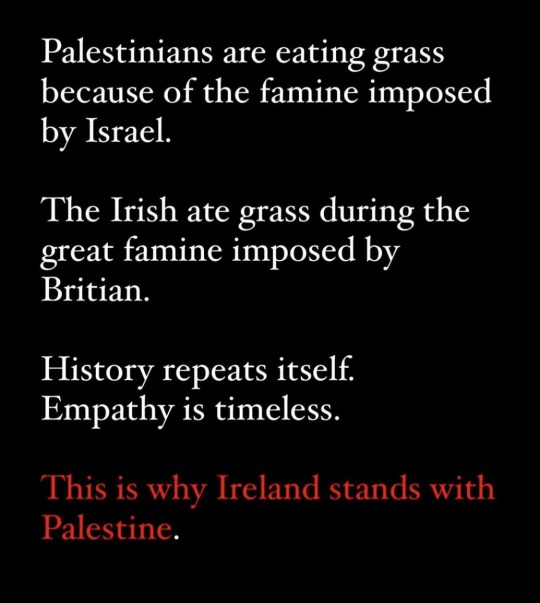
1. Haifa Massacre 1937
2. Jerusalem Massacre 1937
3. Haifa Massacre 1938
4. Balad al-Sheikh Massacre 1939
5. Haifa Massacre 1939
6. Haifa Massacre 1947
7. Abbasiya Massacre 1947
8. Al-Khisas Massacre 1947
9. Bab al-Amud Massacre 1947
10. Jerusalem Massacre 1947
11. Sheikh Bureik Massacre 1947
12. Jaffa Massacre 1948
13. Deir Yassin Massacre 1948
14. Tantura Massacre 1948
15. Qibya Massacre 1953
16. Khan Yunis Massacre 1956
17. Jerusalem Massacre 1967
18. Sabra and Shatila Massacre 1982
19. Al-Aqsa Massacre 1990
20. Ibrahimi Mosque Massacre 1994
21. Jenin Refugee Camp April 2002
22.
23. Gaza Massacre 2012
24. Gaza Massacre 2014
25. Gaza Massacre 2018-19
26. Gaza Massacre 2021
27. Gaza Genocide 2023 is still ongoing.
28. DON'T LET ANYONE CONVINCE YOU THAT IT STARTED ON OCTOBER 7th***
#mustshare#sharethis#must watch#pray for palestine#free palestine#i stand with palestine#end genocide#ceasefire#boycott israel#pray for gaza#like and/or reblog!#pls share#pls reblog#support palestine#famine#show your support#show some love#from the river to the sea palestine will be free#dont stop talking about palestine#gaza genocide#free gaza#gaza strip#free west bank#zionazis#israel are the real terrorists#stop killing children#fuck the idf#fuck netanyahu#satanyahu#fuck biden
788 notes
·
View notes
Text

Dove by Kareem Dabbah, 1988. Born in 1943 in Jerusalem, Kareem Dabbah was an active member of the Board of the Palestinian Artists League. Dabbah specialized in copper engraving and worked with ceramics too. His artworks focus on popular folkloric symbols and Arabic calligraphy. Dabbah passed away in Ramallah in 2021.
949 notes
·
View notes
Text

The war in Gaza isn't just about Palestinian rights; it's about the very nature of the world we live in. Last week, I wrote this piece (link below), reflecting on earlier writings by scholars about how Gaza has become a model for making entire populations rightless and justifying their exclusion from life, taking away their dignity, and using tools of explicit and implicit violence and surveillance to kill and discipline them when they rebel against these conditions.
So, when Gaza says NO to all these things, it's not just defending itself and the Palestinian cause; it's also protecting the world from normalizing policies that make people unworthy of life and dignity just because they belong to the "wrong" ethnic, religious, or class group. When this battle is over, you'll thank Gaza for stopping dangerous precedents from being set and established, and for asserting that people cannot be killed, erased, and destroyed by the more privileged.
#palestine#gaza#free palestine#permanent cease fire#end the active genocide#stop the genocide#end the occupation#end gaza starvation
635 notes
·
View notes
Text
Three soldiers from the Israeli occupation army playing with the Javelin anti-tank shoulder missiles.
There was no danger as they faced the target without any cover, and someone was already filming.
The cost of one missile without the launcher is between $70,000 to $100,000. It was exactly $78,000 in a report by the Pentagon in 2021, and now it's more expensive and could reach $100,000.
This is where the taxpayer's money goes; this is why Israel takes aid from the USA.
A video was published by a soldier named Emil Antonov, who is a tattoo maker in Jerusalem.
ثلاثة جنود من جيش الاحتلال الإسرائيلي يلعبون بصواريخ جافلين المضادة للدبابات على الكتف. لم يكن هناك خطر حيث واجهوا الهدف دون أي غطاء، وكان هناك شخص يقوم بالتصوير. تكلفة صاروخ واحد بدون القاذفة تتراوح بين 70,000 إلى 100,000 دولار. كانت تحديداً سعرها 78,000 دولار في تقرير للبنتاغون في عام 2021، والآن هي أغلى من ذلك وربما تصل إلى 100,000 دولار.
هكذا تصرف أموال دافعي الضرائب؛ لهذا السبب تأخذ إسرائيل المعونات من الولايات المتحدة الأمريكية.
تم نشر فيديو من قبل جندي يدعى إميل أنطونوف، وهو رسام وشم في القدس.
#Americans pay taxes for Israeli soldiers' toys#USA funds terrorism#israel is a terrorist state#israelis are terrorists#Israelis are war criminals#israel is committing genocide#israeli war crimes#Israeli is a war criminal#i stand with palestine#free gaza#free palestine#palestine#gaza#israel#jerusalem#فلسطين#arabic#Americans tax money
508 notes
·
View notes
Text
quick palestine fact sheet:
there are nearly 7 million palestinian refugees globally
1.5 million individuals live in the 58 recognized palestine refugee camps around palestine (i.e. in gaza, syria, east jerusalem, etc) recognized by the unrwa
67% of gaza's population are refugees
there are 905,000 registered palestine refugee children: 635,000 in gaza and 269,000 in the west bank
palestinian refugees frequently cannot access public health insurance and are barred from many professions; some areas bar them from education and formal work
in gaza poverty rates are nearly 82% and the unemployment rate is some of the highest in the world at nearl 47% as of august 2022
one recent study showed that 88% of palestinian children show signs of war-related post traumatic stress disorder
37% of adults in the gaza strip qualify for diagnosis for ptsd; however, this number should be approached cautiously, accounting for preconceptions about mental health, access to diagnosis, and hermeneutic injustice: the number is likely far higher
48,000 people in gaza have some form of a disability: more than one fifth of this number are children
palestinians are not allowed, by israeli law, to have citizenship; they have no freedom of movement, and can be subject to forced evictions, detention, and torture.
the per capita gdp of palestine is US$3,678 as of december 2021; this is in comparison to a gdp per capita of USD$52,000 in israel
palestine does not have a formal military. the us stopped aid to palestine, around $60 million, in 2019. palestinian security services receives around $27 million from the national budget.
hamas, a separate entity from the pss, receives around $300 million per year. in comparison, israel spends in excess of USD$23.6 billion annually on their military.
in the midst of disinformation campaigns by global powers, fight facts with facts- and with protests, rallying, donating, elevating the voices of palestinians. keep showing up. keep educating yourself and others. never give up hope. palestine will be free.
568 notes
·
View notes
Note
do you know anything about native wildlife or plant life in palestine? particularly interested in primates because that's always what i'm most interested in but i'd really like to know more about what the animals and plants native to the land are like. what they were like pre israeli occupation and what sort of animal and plant life will need repairing when palestine is free. i hear a lot about the people and the human palestinian culture and it's wonderful but it's difficult for me to find anything regarding nonhuman life and i would like to learn more about it.
Honestly, the topic of Palestinian wildlife and its intersection with colonialism has been something that has increased a lot over the past couple of years. I can't offer anything about primate species (Palestine doesn't have any) but we do have lots and lots of very cool native animals like Gazelle and Caracal and Sand foxes and lots of bats and gerbils and snakes.
The Palestine Wildlife Society actually has a website with lists of all the animals found in Palestine and what level of conservation status they are at (plus the Arabic names): https://www.wildlife-pal.org/en
The Palestinian Central Bureau of Statistics also reported back in 2012 that:
There are about 51,000 living species (flora and fauna) in historical Palestine, constituting approximately 3% of global biodiversity.
In the West Bank and Gaza Strip there are an estimated 30,904 animal species, consisting of an estimated 30,000 invertebrates, 373 birds, 297 fish, 92 mammals, 82 reptiles, and 5 amphibians. Recent studies on birds in Palestine indicated that there are 373 species, which represent 23 Orders, 69 families, 21 Subfamilies, and 172 genera. The country also hosts 2,850 species of plants from 138 families.
And also added in 2014:
Israeli Violations are the main causes of Biodiversity deterioration
Based on 2012 data from ARIJ Research Institute, the Expansion and Annexation Wall has a total length of about 780 kilometers, of which 61% has been completed. The route of the Wall has isolated 680 km2 of Palestinian land between the Wall and the Green Line, comprising approximately 12.0% of the West Bank. This land comprises about 454 km2 of agricultural, pasture land and open areas, 117 km2 that were confiscated for Israeli settlements and military bases, 89 km2 of forest and 20 km2 Palestinian built-up land.
During 2013, more than eight thousand dunums of land were confiscated from Palestinians and more than 15 thousand horticultural trees were destroyed, causing considerable damage to the Palestinian environment and biodiversity.
The Israeli settlements and military bases also contribute in the biodiversity deterioration since there were 482 Israeli settlements and military bases in the West Bank at the end of 2013 contained around 563,546 settlers at the end of 2012.
Climate change is the most important natural factor that contributes to biodiversity degradation in Palestine. More animal and plant species have become under serious threat of becoming rare due to low rainfall, high temperatures, and the changing characteristics of the four seasons, in which drought is creeping into winter and spring.
The mountain Gazelle is currently endangered and this is due mostly to the building of roads and fences as well as predation and collisions with cars (the article also references the building of housing units in Mitzpeh Nafto'ah, which one of the areas where, in 2012, Israeli developers wanted to 'build up Jerusalem'). As of 2015, there were around 2,000 identified Gazelles within the Palestinian territories and historic Palestine. The mountain Gazelle look like this:
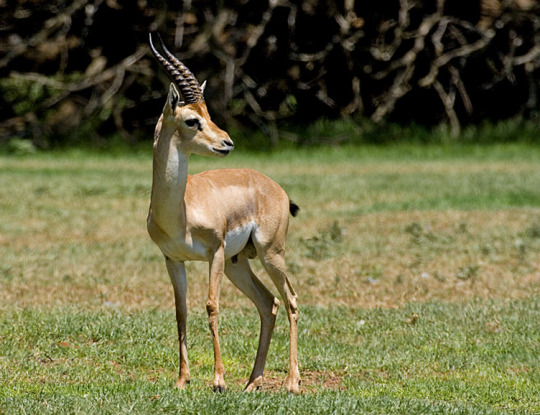
There have also been efforts for plant conservation in Palestine like the Iris Atrofusca, which has an extremely fragile population and is found almost exclusively within Palestine - a botanical garden was established for this particular Iris in the North Eastern Slopes of Palestine and in 2021, 120 clones of Iris Atrofusca were planted. Here is what they look like:

(also very interesting, sheep do not eat it!)
Probably most famous is the extinction of the Palestinian Crocodile, the last rhetorical circulation to 1935. Elizabeth Bentley wrote a great piece on it, you can read the full PDF on the Institute of Palestine Studies website or the edited (with permission) one published to Science for the People Magazine, I copied a segment from the latter here:
Colonial zoologists and collectors saw and appreciated Palestine’s bountiful plants and animals as objects of scientific inquiry. This scientific appreciation was inextricable from imperialist ambitions and the drive for profit. There were no wildlife protection laws in Palestine until 1924, which was after crocodiles’ likely regional extinction, and even then, the laws were loosely enforced. Colonial zoologists not only observed and wrote about Palestinian animals in their natural habitat. These zoological works were one of extraction and commodification.
Euphemistically termed processes of “collection” involved a network of human and nonhuman actors, whereby colonial zoologists hunted and killed Palestinian animals, studied them, and transported their remains overseas. Disemboweled, stuffed with wire and flax, and then displayed in glass cases, Palestinian animals were reanimated as spectacles for the viewing pleasure of museumgoers in London and Berlin.
While aligned with the broader trends in colonial zoology, the allure of the last Palestinian crocodile surpassed the confines of scientific inquiry; it adapted a symbolic, even mythical quality. Colonial zoologists’ ongoing speculation about Palestinian crocodile extinction necessitated a degree of willful (or internalized) unknowing about Palestine and Palestinians. Colonial zoologists were heavily dependent on Palestinians’ ecological expertise. Despite this, their writings convey mistrust and condescension toward Palestinians, along with a detachment from how local populations lived alongside Palestinian ecology.
Colonial scientific literature on Palestinian animals frequently perpetuated the racist, historically inaccurate outlook of “science for the West, myth for the rest.” Yet colonialist writings on the last Palestinian crocodile reflected their own symbolic attachments and investment in mythical thinking.
So there is a lot of work to do in regard to animal and plant conservation and several extinct animals I didn't bring up here but It is a deep dive and goes a lot farther than a lot of people consider. The Palestine Wildlife Society has a massive catalog and I hope you look through it!
1K notes
·
View notes
Text
May 15th is a day that many Palestinians commemorate as a somber day of remembrance of the Nakba, a day of settler violence when half of all Palestinians were forcibly removed or otherwise expelled from their homes. On a related note, May 14th happens to be the day that many Israeli citizens celebrate as their Independence Day.
It’s worth noting that the man in the video, the Israeli settler occupying a Palestinian home in East Jerusalem, is Yaakov (Jacob) Fauci, a Trump-supporting, antivaxxer from Long Island. The video is from 2021, but it serves as an instructive allegory for settler colonialism and what has been going on since 1948.
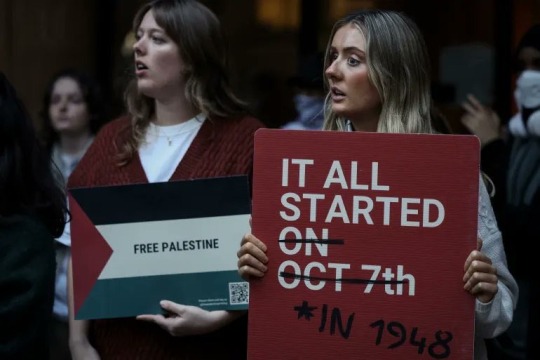
As always, this did not begin on October 7th 🇵🇸🇵🇸🇵🇸
#politics#palestine#israel#displacement#yaakov fauci#settler colonialism#settler violence#al nakba#october 7#october 7th
168 notes
·
View notes
Text

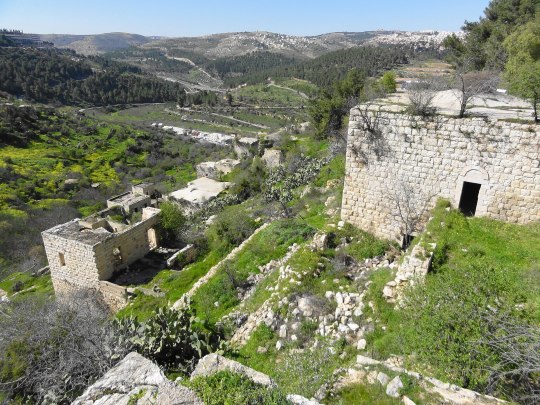
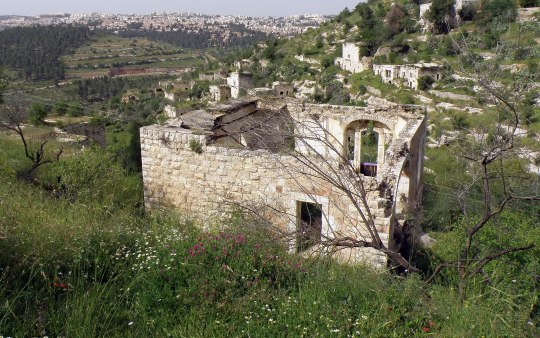

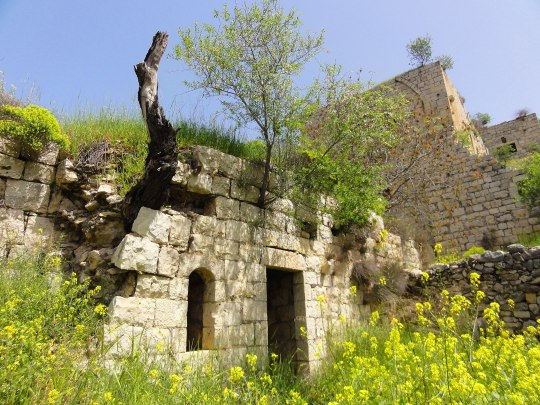
when the homes in the depopulated palestinian village of lifta were originally built is impossible to tell and most likely varies from house to house. the area's been known since ancient times, including having been written about in the hebrew bible. it's retained multiple different names throughout history - lifta by romans, nephto by byzantines, clepsta by crusaders, then lifta again by arabs. in more recent times, the area saw battle in the early 19th century, when it saw a peasant's revolt against egyptian conscription and taxation policies. (egyptian-ottoman ruler muhammad ali had attempted to become independent from the ottoman empire, and sought to use the area of "greater syria" which palestine was apart of as a buffer state.)
the village was predominantly muslim with a mosque, a maqām for local sage shaykh badr, a few shops, a social club, two coffee houses, and an elementary school which opened in 1945. its economy was based in farming - being a village of jerusalem, farmers would sell their produce in the city's markets. an olive press which remains in the village gives evidence to one of the most important crops its residents farmed. the historically wealthy village was known for its intricate embroidery and sewing, particularly of thob ghabani bridal dresses, which attracted buyers from across the levant.
lifta also represents one of the few palestinian villages in which the structures weren't totally or mostly decimated during the 1948 nakba. 60 of the 450 original houses remain intact. from zochrot's entry on lifta:

israel's absentee property law of 1950 permits the state to expropriate land and assets left behind, and denies palestinians the right to return to old homes or to reclaim their property. it's estimated that there's around 400,000 descendants of the village's original refugee population dispersed in east jerusalem, the west bank, jordan, and the palestinian diaspora.
like many depopulated palestinian houses, some of those in lifta were initially used to settle predominantly mizrahi immigrants and refugees, in this case 300 jewish families from yemen and kurdistan. the houses weren't registered in their names, and the area generally saw poor infrastructure and no resources including water and electricity provided by the government. most left in the early 1970s as a part of a compensation program to move out people who'd been settled in depopulated palestinian houses - if they didn't, they were referred to as "squatters" and evicted. (holes were even drilled in the roofs of evacuated buildings to make them less habitable). the 13 families which remain there today only managed to do so because they lived close to the edge of the village.
in 1987, the israeli nature reserves authority planned to restore the "long-abandoned village" and turn it into a natural history center which would "stress the jewish roots of the site", but nothing came of it. several more government proposals on what to do with the land had been brought up since then. this culminated in in 2021 when the israel land administration announced without informing the jerusalem municipal authorities that it issued a tender for the construction of a luxury neighborhood on the village's ruins, consisting of 259 villas, a hotel, and a mall. since 2023, they've agreed to shelve and "rethink" these plans after widespread objection.
the reasons for the objections varied significantly between the opposing israeli politicians - who see the village as an exemplar of cultural heritage and "frozen in time" model of palestinian villages before 1948 - and palestinians - who largely see the village as a witness of the nakba and a symbol of hope for their return. lifta is currently listed by unesco as a potential world heritage site, a designation netanyahu has threatened to remove several times.
many palestinians who are descendent from its former residents still live nearby. like with many other depopulated palestinian villages, they've never ceased to visit, organize tours of the village, and advocate for its preservation.
#palestine#info#nakba#my posts#the dresses link isnt specific to lifta thobs but provides a good overview#i couldn't find anything online abt lifta's embroidery but some of the book pdfs on palestinian costume i reblogged a while ago have info
396 notes
·
View notes
Text
Hamas has claimed it is keeping Israeli commanders [plural!] hostage amid reports that 50 civilians are being held by gunmen in Be’eri Kibbutz near the Gaza border.
Hamas fighters have reportedly captured senior Israeli military officer Maj Gen Nimrod Aloni, the former commander of the Israeli defence force’s Gaza division, being led through the street by militants in a t-shirt and underwear.[...]
The commander was responsible for running Operation Guardian of the Walls, Israel’s military response to Hamas rocket attacks against Jerusalem in the Gaza Strip in May 2021.
He also commanded the Gaza division during Breaking Dawn, a three-day Israeli air strike campaign against Palestinian Islamic Jihad (PIJ) targets in August 2022.
7 Oct 23
388 notes
·
View notes
Text
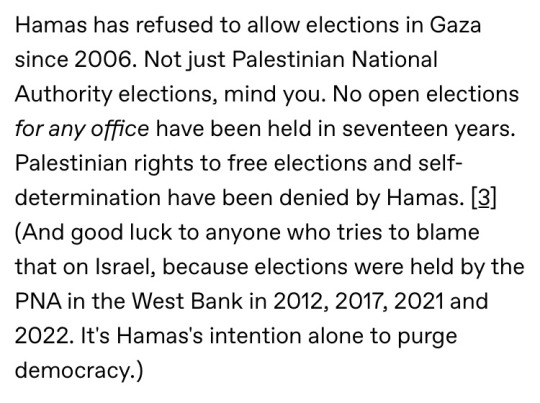
Hamas has refused to allow elections in Gaza since 2006. Not just Palestinian National Authority elections, mind you. No open elections for any office have been held in seventeen years. Palestinian rights to free elections and self-determination have been denied by Hamas. [3] (And good luck to anyone who tries to blame that on Israel, because elections were held by the PNA in the West Bank in 2012, 2017, 2021 and 2022. It's Hamas's intention alone to purge democracy.)
How in the fucking hell am I seeing this bit of misinformation surface again and again? THE ELECTIONS HAVE BEEN SUSPENDED BY MAHMOUD ABBAS OF FATAH, DIPSHITS. A fact partly acknowledged even by the freedom house page linked as a source:
Comprehensive PA elections were planned for 2021, but Abbas canceled them that April, citing Israel’s refusal to allow PA election activity in East Jerusalem.
Ordinarily I charitably assume this take is just a sort of kneejerk “Hamas bad” impulse without going so far as to lift up fatah et al in its stead but here its impossible to deny the obvious: the PA in the west bank is being presented as the civil, preferable, democratic alternative to the terrorist theocratic alternative of hamas. Without going so far as to celebrate or approve of every action taken by Hamas, surely the recent history of democratic suppression and any familiarity with the horrifying state of the West Bank since oslo might give some indication of why many Palestinians prefer and support Hamas when forced to choose?
360 notes
·
View notes